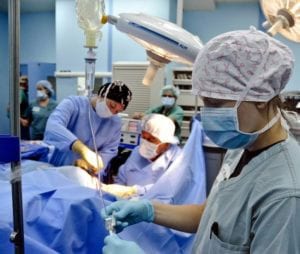According to Medical XPress, researchers from the Cerebrovascular Surgery and Interventions Center at Boston Children’s Hospital recently developed a new test that can benefit patients with Moyamoya disease. This rare condition is usually treated with surgical revascularization. But doctors sometimes struggle with being able to diagnosis Moyamoya before further complications occur. This new test offers an effective and non-invasive way to identify urinary biomarkers related to the disease in pediatric patients. Check out the full data from the proof-of-concept study published in Frontiers in Neurology.
Moyamoya Disease
Moyamoya Disease is a rare and progressive blood vessel disorder that affects blood vessels in the brain. The condition causes carotid arteries, which provide blood to the brain, to either narrow or become blocked. As this occurs, there is less blood flow to the brain, increasing the risk of stroke. At first, the brain attempts to fix this and creates new blood vessels (though these eventually also fail to help). Altogether, “Moyamoya” stands for “puff of smoke” in Japanese and refers to the wispy appearance of these blood vessels in imaging. Doctors are not sure exactly what causes Moyamoya disease. However, because many diagnoses appear in Asian countries, some believe that there is an underlying genetic component.
Typically, symptoms either appear from ages 5-10 or after 40. Symptoms include:
- Stroke or recurrent transient ischemic attacks (TIAs)
- Headache
- Seizures
- Hemorrhagic stroke (bleeding in the brain)
- Note: This specific symptom is usually more common in adult patients than in children.
- Muscle weakness or paralysis on one side of the body
- Note: This typically affects the face, arms, or legs.
- Fatigue and/or general malaise
- Developmental delays
- Progressive difficulties in speaking, understanding others, thinking, or remembering
- Cognitive decline
- Involuntary movements
Learn more about Moyamoya disease.
The Research
Furthering the diagnostic difficulty, many current tests used to diagnose Moyamoya disease fail to fit the needs of testing pediatric patients. For example, younger patients may be unable to express exactly what symptoms they are feeling. Imaging tests may be long, invasive, or difficult. Reaching a diagnosis is extremely important – an estimated 6% of pediatric strokes in America result from Moyamoya, so being able to diagnose and treat the condition before a stroke occurs is crucial.
In this research, the researchers collected urine and cerebral spinal fluid samples from 32 pediatric patients with Moyamoya disease. Altogether, samples were collected over a 7-year period. All samples were also collected prior to surgical revascularization, which is a procedure that restores perfusion (blood flow) in patients with reduced blood flow. Additionally, researchers also explored similar samples collected from a healthy control group.
Ultimately, researchers found a variety of urinary biomarkers: MMP-2, VEGF, MMP-9, and MMP-9/NGAL. A biomarker is a measurable substance which indicates something about one’s health. In this case, these biomarkers highlighted elevated protein levels within the urine and cerebrospinal fluid of patients with Moyamoya disease. In particular, researchers believe that MMP-2 is the best biomarker in relation to one’s condition, with high percentages of accuracy, sensitivity, and specificity. Thus, researchers, in the future, can test for these biomarkers and use them to predict disease progression and the need for surgical revascularization.







